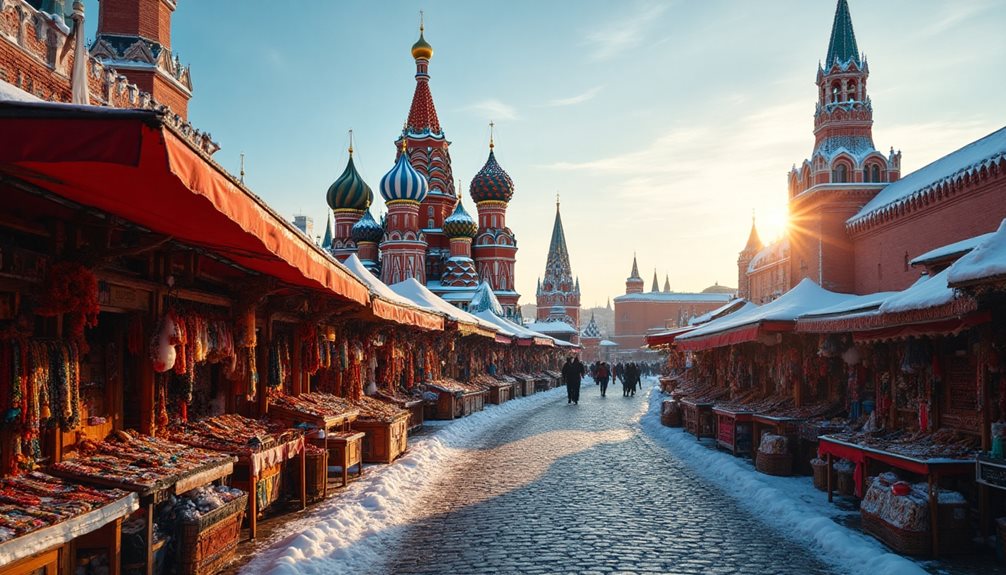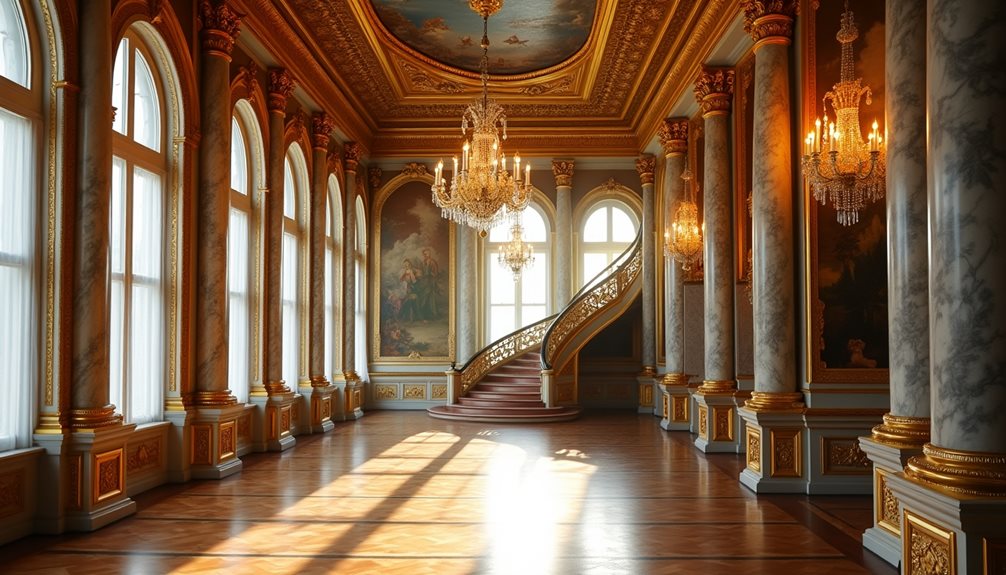The Decembrist Revolt of 1825 was a watershed moment in Russian history, marking the first significant challenge to the autocratic rule of the Romanov dynasty. Led by a group of nobles and military officers, the uprising sought to establish a constitutional monarchy and introduce liberal reforms. Although the revolt was ultimately crushed, its ideals of individual rights and freedoms resonated with many Russians, sowing the seeds of a growing liberal movement. But what drove these men to risk everything for a cause that seemed doomed from the start, and how did their actions shape the course of Russian history?
Causes of the Decembrist Revolt
Amidst the tumultuous landscape of 19th-century Russia, the Decembrist Revolt was a pivotal event that shook the foundations of the imperial regime. The revolt, which took place on December 14, 1825, was the culmination of growing discontent among the Russian nobility and intelligentsia with the autocratic rule of Tsar Alexander I and the lack of reforms in the country.
The causes of the Decembrist Revolt were multifaceted and deeply rooted in the social and economic fabric of Russia. The country’s defeat in the Napoleonic Wars had led to a significant increase in serfdom, which further exacerbated the poverty and inequality among the peasant class.
The nobility, who had been exposed to Western liberal ideas during their travels abroad, began to demand reforms and greater representation in government.
The absence of a clear successor to Tsar Alexander I, who died in 1825, created a power vacuum that the Decembrists sought to exploit. They hoped to take advantage of the uncertainty to push for constitutional reforms and an end to autocratic rule.
The revolt was also driven by a desire for modernization and the adoption of Western values, which the Decembrists saw as essential for Russia’s progress and prosperity. The convergence of these factors created a perfect storm that ultimately led to the outbreak of the Decembrist Revolt.
Key Players and Their Roles
Several key players emerged as leaders of the Decembrist Revolt, each bringing their unique perspective and skills to the movement.
Pavel Pestel, a charismatic and well-educated officer, played a crucial role in shaping the movement’s ideology. He authored the influential document \”Russkaya Pravda\” (Russian Truth), which outlined the Decembrists’ vision for a constitutional monarchy and social reform.
Pestel’s leadership and intellectual contributions helped to galvanize the movement and attract like-minded individuals.
Another key figure was Mikhail Lunin, a skilled orator and writer who helped to disseminate the Decembrists’ ideas through his writings and public speeches.
His eloquence and persuasive abilities made him a valuable asset to the movement, allowing him to rally support among the Russian nobility and intelligentsia.
Sergei Muravyov-Apostol, a seasoned military officer, brought a sense of discipline and organization to the movement. His experience in the Napoleonic Wars and his knowledge of military tactics proved invaluable in planning the revolt.
Other notable figures, such as Prince Sergei Trubetskoy and Prince Eugene Obolensky, also played important roles in the movement. Trubetskoy, a member of the royal family, lent credibility to the cause, while Obolensky’s connections to the nobility helped to secure support from influential quarters.
These individuals, along with others, formed a diverse and dynamic leadership that drove the Decembrist Revolt forward.
The Revolt Unfolds in St Petersburg
The Decembrist Revolt reached its climax on December 14, 1825, in St. Petersburg, as a group of conspirators, primarily composed of military officers, attempted to seize power and overthrow the autocratic government of Russia.
The revolt was sparked by the death of Tsar Alexander I, which created a power vacuum and led to a dispute over the succession. The Decembrists, who were largely influenced by liberal and nationalist ideologies, saw this as an opportunity to establish a constitutional monarchy and bring about reforms to the Russian Empire.
The conspirators, led by Prince Sergei Trubetskoy and Colonel Pavel Pestel, had planned to gather on Senate Square in St. Petersburg and proclaim the establishment of a provisional government.
However, their plans were compromised when Tsar Alexander’s brother, Constantine, who was next in line to the throne, renounced his claim to the throne in favor of his brother Nicholas. This led to confusion among the conspirators, and their plans were further disrupted by the presence of loyalist troops in the city.
Despite these setbacks, a group of around 3,000 soldiers, mostly from the Imperial Guard, gathered on Senate Square, refusing to swear allegiance to Nicholas as the new tsar.
The situation remained tense, with the outcome hanging in the balance, as the fate of the revolt and the future of Russia hung precariously in the balance.
Tsar Nicholas I’s Response
Tsar Nicholas I’s Response
Nicholas I, determined to crush the rebellion, swiftly sprang into action, mobilizing his loyalist troops to quell the uprising. As soon as the Tsar learned of the rebellion, he convened an emergency council to assess the situation and determine a course of action.
Nicholas I immediately issued a declaration branding the rebels as “treasonous and faithless” and vowed to take severe measures to suppress the revolt.
The Tsar’s response was marked by swift and decisive action. He deployed troops to key locations in St. Petersburg, including the Senate Square, where the rebels had gathered.
The loyalist forces were instructed to show no mercy to the rebels, and the Tsar himself took command of the troops. Nicholas I also issued orders to arrest and detain suspected rebels, and to seize key government buildings and institutions.
The Tsar’s swift response was intended to demonstrate his authority and crush the rebellion before it could gain momentum. By taking decisive action, Nicholas I aimed to prevent the rebellion from spreading to other parts of the empire and to restore order in the capital.
The loyalist troops were successful in dispersing the rebels, and many of the key leaders were either killed or captured in the ensuing battle. The Tsar’s response had effectively suppressed the rebellion, but the consequences of his actions would be far-reaching and profound.
Aftermath and Repression
Nicholas I’s decisive victory over the Decembrist rebels was swiftly followed by a period of severe repression, as the Tsar sought to eradicate any lingering dissent and ensure that such a rebellion would never again threaten his authority.
The repression was led by the newly established Supreme Criminal Court, which was tasked with investigating and prosecuting the Decembrists.
The court’s proceedings were marked by a lack of due process, with many defendants being subjected to torture and other forms of coercion in order to extract confessions.
In the end, 121 Decembrists were found guilty of treason and sentenced to various forms of punishment, including imprisonment, exile, and hard labor.
Five of the leaders, including Pavel Pestel and Mikhail Lunin, were hanged in a public execution in St. Petersburg.
The repression extended beyond the Decembrists themselves, as the Tsar also sought to root out any potential sympathizers or supporters.
A wide-ranging purge of the military and civil service was conducted, resulting in the dismissal of hundreds of officers and officials who were deemed to be unreliable or disloyal.
The period of repression also saw a significant increase in censorship and surveillance, as the Tsar sought to suppress any dissenting voices or opinions.
The Russian people were subjected to a propaganda campaign that portrayed the Decembrists as traitors and enemies of the state, and any form of dissent or opposition was ruthlessly suppressed.
Legacy of the Decembrists
Repeatedly, historians have acknowledged the Decembrist Revolt as a pivotal moment in Russian history, marking the beginning of a long and arduous journey towards liberal reform and constitutional monarchy. Despite the revolt’s failure to achieve its immediate goals, the Decembrists’ bravery, sacrifice, and ideals have left an indelible mark on Russian society.
Their rebellion against autocracy and demand for constitutional rights resonated deeply with the Russian people, inspiring future generations of reformers and revolutionaries.
The Decembrists’ legacy can be seen in the numerous literary and artistic works that have immortalized their struggle. Alexander Pushkin’s poem “The Bronze Horseman” and Nikolai Nekrasov’s poem “Russian Women” are just two examples of the many works that have celebrated the Decembrists’ courage and ideals.
Moreover, the Decembrists’ emphasis on education, civic engagement, and social responsibility helped to galvanize the development of Russia’s intelligentsia, laying the groundwork for the country’s future intellectual and cultural flowering.
The Decembrists’ legacy has also been honored through various forms of commemoration. In 1925, the Soviet government marked the centennial of the Decembrist Revolt with a series of public events and exhibitions, recognizing the Decembrists as precursors to the Russian Revolution.
Today, the Decembrists are remembered as heroes of Russian history, their bravery and sacrifice serving as a powerful symbol of resistance against tyranny and oppression.
Impact on Russian Liberalism
As the Decembrist Revolt’s ideals of constitutional monarchy and liberal reform began to take hold in Russian society, a profound impact on the country’s liberal movement became increasingly evident.
The Decembrists’ emphasis on individual rights, freedoms, and the rule of law resonated with many Russians, who began to question the authoritarian nature of the Russian Empire. This growing discontent with the existing order paved the way for the emergence of a liberal movement that would shape Russian politics and society for decades to come.
The Decembrist Revolt’s impact on Russian liberalism was multifaceted. Firstly, it inspired a new generation of liberal thinkers and activists, who drew on the Decembrists’ ideas to advocate for constitutional reform and social change. Secondly, the revolt highlighted the need for a more inclusive and representative system of government, which led to increased demands for the expansion of the franchise and the establishment of a constitutional monarchy.
Finally, the Decembrist Revolt’s emphasis on the importance of individual rights and freedoms helped to lay the groundwork for the development of a more robust and vibrant civil society in Russia.
The legacy of the Decembrist Revolt can be seen in the liberal reforms implemented by Alexander II in the 1860s, including the emancipation of the serfs and the establishment of a more independent judiciary.
These reforms, in turn, paved the way for the emergence of a more liberal and democratic Russia in the late 19th and early 20th centuries.
Conclusion
The Decembrist Revolt of 1825 served as a catalyst for the liberal movement in Russia, shaping the country’s future trajectory. Despite the revolt’s suppression, its ideals of individual rights, freedoms, and the rule of law continued to resonate, influencing subsequent reform efforts. The legacy of the Decembrists paved the way for the gradual erosion of autocracy and the eventual emergence of constitutional monarchy in Russia. The revolt’s impact on Russian liberalism remains a lasting and profound one.




